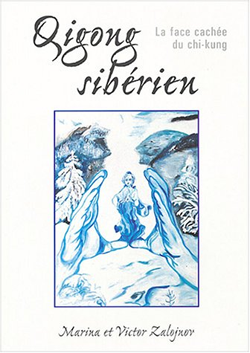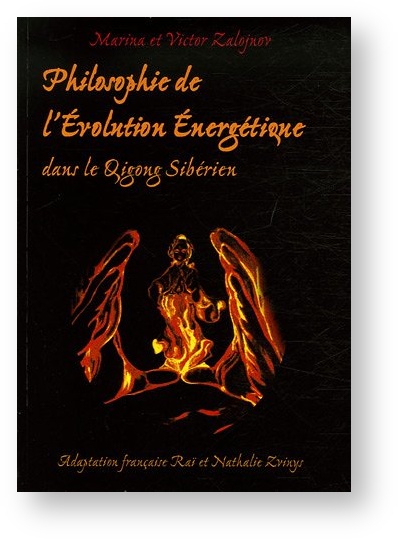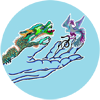Zhen Paï and Siberien Qigong
A synthesis of diverse Energy Arts with Chinese Qi Gong and Taoist traditions
Its principal idea is to enhance the capacity to feel the energy that is present in each one of us, so that manipulating all its diversity becomes evident and clear, almost material.
To feel, to distinguish and to develop the energy within and outside of the body,as well as in nature that surrounds us.To use it for your health and for your personal development.
Read more : Difference of Siberian Qi Gong and other Energy Arts
Background and History of Siberian Qigong
Siberia, includes huge expanses of steppes, the impenetrable undergrowth of the Taiga, infinite diversity of nature, incredible multitude of colors. It is a Promised Land, full of life, calm and wisdom. Its endless spaces have always awakened man’s desire to create a majestic and durable masterpiece that transmits this earth’s respiration, the rhythm of its austere, silent, and richly powerful nature.
For millennia these lands remained virgin, intact. A multitude of different ethnic groups lived in these vast spaces, some consisting of only a few individuals, and we can divide these diverse populations into two groups. The first occupied Central and Southern Siberia, with horses as transportation and principal resource. The second group lived in Northern Siberia, with reindeer as their essential resource.

Relationships among the different ethnic populations in the first group, those who lived in the steppes, were sometimes peaceful, sometimes aggressive, depending on circumstances surrounding their search for pastures, fertile land, or forests with wild game. The necessity of protecting oneself, as well as taking over other tribes’ belongings, caused the people of this region to become aggressive and combative. Thus originated the constant necessity to perfect clannish martial arts and shamanic rituals. These people’s consciousness turned towards finding more and more efficient ways to kill strangers.
Among the Northern people inhabiting the Tundra, migration of the tribes was much less frequent. Due to the difficulty of life in this land of continual freezing and aurora borealis, man respected and sought to coexist peacefully with nature and with his fellow inhabitants.
The long nights during half the year and the severe cold, from -76 to –94° F, forced people to spend most of their time indoors in the small family circle. In this climate of survival man learned to rely on his own capacities -- his own body, intellect and instincts. Closed in within their homes, they also developed a talent for meditation and a capacity to perceive subtle energetic changes inside their bodies.
Southern Siberia gave birth to original martial arts, Northern Siberia to energy and meditation practices .
Nomadic people of Southern Siberia, the Koraks, Aleutians, Khakassians, Buryats, Teleutians), Altaians, always migrated slowly, looking for more hospitable areas, avoiding many marvelous regions because of their severe climate. They lived close to, and under the influence of the Tartars, the Mongols, and the Manchus, important because of their great number, and whose social life was characterized by a hierarchical structure with multiple echelons. Thus the cultures emanating from Central, Southern and Far-Eastern Asia penetrated southern and central Siberia, thereby enriching their way of life. Influences from China, Korea, Tibet, Persia and Russia were avidly adapted by the mentality of the nomadic peoples, forming a barbarous and fantastic eclecticism.
 In Northern Siberia, on the contrary, their isolation continued to discourage social life, the nearest inhabitants living hundreds of kilometers apart. Thus these peoples maintained their traditions: respect for women, kindness, pacifism, desire to blend with nature and to understand its rules in order to survive. This multitude of Northern peoples (Chukchees, Nentsy, Nanais, Evenks, Tungus) neither likes war, nor knows how to make it. They do not posses the traits characteristic of warriors, such as national pride, furor and sadism. For the Northern man, quarrels, negative emotions or similar manifestations are rare and disappear quickly, sliding by superficially. These outbreaks are unimportant and do not touch the roots of human nature, rather covering it from time to time, as a slight cloud hides the sun before quickly disappearing without a trace into the immense depths of the blue sky.
In Northern Siberia, on the contrary, their isolation continued to discourage social life, the nearest inhabitants living hundreds of kilometers apart. Thus these peoples maintained their traditions: respect for women, kindness, pacifism, desire to blend with nature and to understand its rules in order to survive. This multitude of Northern peoples (Chukchees, Nentsy, Nanais, Evenks, Tungus) neither likes war, nor knows how to make it. They do not posses the traits characteristic of warriors, such as national pride, furor and sadism. For the Northern man, quarrels, negative emotions or similar manifestations are rare and disappear quickly, sliding by superficially. These outbreaks are unimportant and do not touch the roots of human nature, rather covering it from time to time, as a slight cloud hides the sun before quickly disappearing without a trace into the immense depths of the blue sky.
There is a legend the the wisest Emperor of China, the Yellow Emporer, Huang Di, descended from the heavens to the blessed earth to bring knowledge to man. He did not resemble the Chinese physically, and he probably came from Yakutia (Northern Siberia) with his small clan. His soul burned with the desire to understand different ways of life. He was incredibly curious and was able not only to see energy, but also to transform and direct it, that is to say, to heal. He showed a strong interest in acupuncture, phytotherapy and Shiatsu, which had secretly existed in China for a long time.He also shared his strange and uncommon knowledge of medicine with doctors of his time. After having produced heirs and attained a respectable age, he left for unknown parts, taking his youngest son with him, and leaving China with an indelible memory of this strange, unpredictable and incomprehensible personality, who always sought peaceful solutions to conflicts.
At the turn of the sixteenth century, almost at the same time that Europeans arrived in America, Siberia also suffered a conquest, or rather a division. After cutting Siberia in half with the first traces of what would become The Trans-Siberian Railway the Russian czars installed surplus soldiers and their families along this route, distributed land to noble families, deported undesirable dissidents or others who undermined their authority to prison camps and forced labor. The only route that connected the military camps and the ever-increasing number of prisons and penal colonies to the growing cultural center of Western Siberia divided Siberia into two unequal parts. The South and the Center found themselves victims of a ferocious and unpitying expansion that exported all their natural resources in total indifference to the natives. Russia’s occupation of Siberia also installed the Slavophile diktat throughout the territory, repressing any manifestation of the different nationalities’ cultures. Thus the traditions of martial arts and energy practices were lost, their memory erased a little more with each generation, leaving space for innovations from the outside. Rising generations considered Shamanic rituals, healing energy techniques, or martial arts as incomprehensible anachronisms, vestiges of a worthless past, at best, a cause for smiles over their naiveté.
In spite of everything, the constant migration of Chinese families and clans towards Siberia played a role in preserving and partially developing accumulated esoteric knowledge. In China, the permanent process of looking for a parcel of land to cultivate in peace had pushed the most courageous and adventurous liberty seekers to seek a rich, unexplored and generous land. They brought with them their knowledge of Chinese martial arts, which they shared with their new Siberian neighbors. Little by little, new combat techniques developed, which were gentler than Northern China’s acrobatic style, and which used the body’s internal force in complex, but rational postures.
It is impossible to describe in words or literary images the particularities of this alliance and transformation of such dissimilar and fantastic traditions. Finally it is much easier and more natural to try to reach the depth of this knowledge by practicing it, in order to form one’s own opinion of the value of Siberia’s heritage of energy work and martial arts. The authors plan to offer a cycle of several books, based on over thirty years of study and practice of Siberian martial arts, of over twenty-five years of research and practice in the fields of energy and meditation rituals and shamanism. Ten years’ work as director of the Center of Traditional medicine of Kemerovo allowed the authors to assimilate numerous practical and theoretic aspects of traditional energy practices and to explore the possible uses of this knowledge for official classical medicine. This study, in collaboration with a group of enlightened physicians and with a group of clairvoyants eager to understand the phenomena responsible for their abilities, gave birth to a series of ideas, hypotheses and discoveries that the authors would like to share with readers interested in the practical and theoretical side of esoteric knowledge.
Qigong, stemming from martial arts, means “energy work” in Chinese. We refer to Siberian qigong because it is different from the numerous types of Chinese qigong. The mixture of Chinese and Siberian cultures, with their considerable inherent differences, opened new facets in the nature of energy work. This can be seen in the originality and the specificity of the movements, in which the perineum is extremely important. Also Siberian qigong explains the sense and the goal of each movement, thus avoiding the nebulous explications, dissimulation and mysticism too often associated with energy work. It proposes an in-depth comprehension of the essence of the movements.
This work is aimed at all who are interested in Qigong and esoteric studies; those who want to understand their sensations (inside or outside of their bodies); those who like koans and enigmas, without necessarily finding answers; and, of course, those who have health problems and would like to solve them without medicine nor miraculous intervention, but solely by virtue of their practice, patience, and self-confidence.
The blossoming of flowers
Future workshops
Visitors Map















